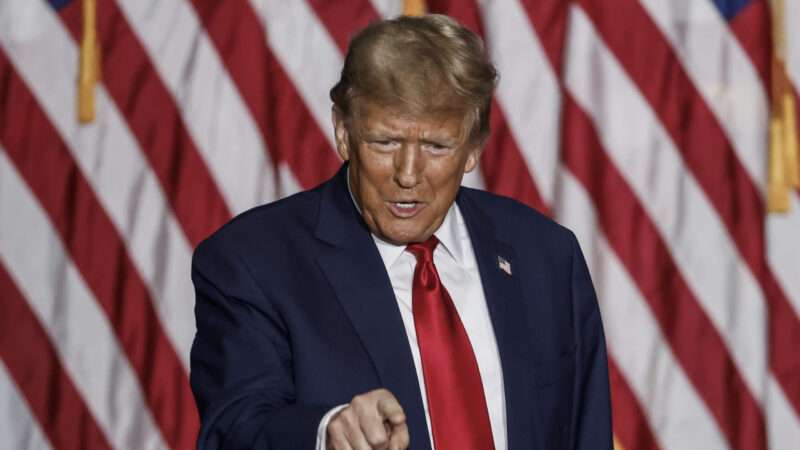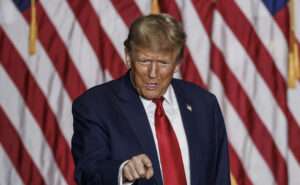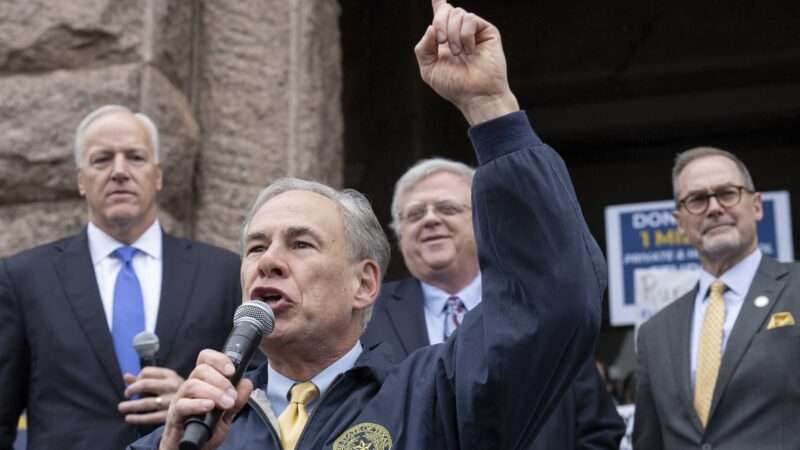From today’s Oregon Court of Appeals decision in Cider Riot, LLC v. Patriot Prayer USA, LLC, in an opinion by Chief Judge Erin Lagesen, joined by Judge Jacqueline Kamins and Megan Jacquot:
Plaintiff Cider Riot, LLC, is a brewery and bar in Northeast Portland. Plaintiff Goldman-Armstrong is its owner and operator. This tort case arises, for the most part, out of a 2019 clash between patrons of Cider Riot, who are associated with Antifa, and, among others, defendants Gibson, Kramer, Ponte, Willis, and Lewis, all of whom are associated with a group or movement known as Patriot Prayer.
Defendant Patriot Prayer USA, LLC, is a limited liability company owned entirely by Gibson. It has no members other than him. Those who identify with Patriot Prayer hold starkly divergent views from those who identify with Antifa. Those divergent views have generated immense hostility, which has led to confrontations, which has resulted in violence between those holding opposing views.
The clash at the heart of this case began as a heated exchange of political viewpoints between defendants, who were on public property adjacent to the brewery and bar, and plaintiffs’ patrons, many of whom were sitting in the bar’s outdoor seating area. Ultimately, the verbal dispute escalated into some physical confrontations. This resulted in injuries to some of plaintiffs’ patrons and, plaintiffs allege, a range of economic and noneconomic losses. Several days after the incident, Gibson urged people to report Cider Riot to the OLCC. Other individuals made online comments disclosing the names and addresses of plaintiffs’ business partners.
For their involvement in that clash, encouraging complaints to the OLCC, and identifying plaintiffs’ business partners, plaintiffs seek to hold all defendants liable for four torts: negligence, trespass, intentional infliction of emotional distress, and intentional interferences with economic relations….
The Court of Appeals held that some of the claims against Gibson should be thrown out, at the “anti-SLAPP motion” stage (a means for claims arising out of constitutionally protected activities to be promptly dismissed), but others—based on Gibson’s allegedly personally egging someone on to fight a bar patron—could continue. I focus here on the claims against Gibson because the other individual defendants’ defenses were rejected as untimely, and thus weren’t substantively discussed by the court.
[a.] Negligence
Plaintiffs’ first claim against Gibson is negligence. The gravamen of that claim is that Gibson’s prolific and well-publicized activities opposing Antifa created a foreseeable risk of harm to plaintiffs when “Gibson coordinated with Patriot Prayer members to arrive at Cider Riot” to “[t]ake the fight to Antifa.” Plaintiffs allege that “[g]iven the repeated extreme incitements of violence against perceived political enemies, it was foreseeable that Defendants’ actions would lead to harm to Cider Riot.” This claim rests largely on evidence of speeches and other statements that Gibson made about Antifa and its association with Cider Riot, as well as evidence of prior violent acts and vandalism against Cider Riot, acts that indicated Antifa was the target.
We have no doubt that, on this record, a reasonable jury could find that it was foreseeable that Gibson’s anti-Antifa advocacy, together with his comments associating Cider Riot with Antifa, would lead to violent or unlawful acts against plaintiffs. But, as explained in Counterman v. Colorado (2023) and Judge Willett’s dissenting opinion in Doe v. Mckesson (5th Cir. 2023), the First Amendment does not allow for imposition of liability for speech or for protest organization based on a negligence standard. For that reason, plaintiffs have not established a prima facie case of actionable negligence against Gibson, and the trial court erred in denying the special motion to strike the negligence claim against Gibson.
[b.] Trespass
Plaintiffs’ second claim against Gibson is trespass. “Trespass to real property is an intentional entry upon the land of another by one not privileged to enter.” Here, plaintiffs have identified no evidence that Gibson entered the Cider Riot property. Indeed, in their discussion of the evidence supporting a prima facie case of trespass, plaintiffs have not pointed to any particular evidence in support of their trespass claim. Rather, their theory on appeal is that Gibson caused others to throw objects or spray pepper spray onto plaintiffs’ property. Having reviewed the record on our own, we have been able to locate no evidence that would allow the reasonable inference that Gibson himself directed or authorized third parties to throw objects or spray mace onto plaintiffs’ property, that he otherwise directed or authorized third parties to enter plaintiffs’ property, or that he ratified any intrusion onto plaintiffs’ property. The trial court erred in denying the special motion to strike the trespass claim as to Gibson.
[c.] Intentional infliction of emotional distress
Plaintiff Goldman-Armstrong asserts a claim of intentional infliction of emotional distress (IIED) against defendant Gibson. A prima facie showing of IIED requires a plaintiff to submit sufficient evidence from which a reasonable trier of fact could find that he met his burden of production for the following elements: “‘(1) the defendant intended to inflict severe emotional distress on the plaintiff, (2) the defendant’s acts were the cause of the plaintiff’s severe emotional distress, and (3) the defendant’s acts constituted an extraordinary transgression of the bounds of socially tolerable conduct.'”
Having reviewed the record, taking into account the protections of the First Amendment, much of the evidence would not allow for the conclusion that Gibson’s “acts constituted an extraordinary transgression of the bounds of socially tolerable conduct” in a way that would permit the imposition of liability consistent with the First Amendment. The conduct of Gibson and other individuals involved with Patriot Prayer no doubt caused emotional distress to plaintiff Goldman-Armstrong. The same thing, however, is undoubtedly true with respect to much protest activity targeting a business because such activity interferes with business. In other words, as with the Black Hats in NAACP v. Claiborne Hardware (1982) [who enforced a boycott by taking down the names of people who weren’t complying with the boycott, names that were later publicized in the community-EV], protest activity that is protected by the First Amendment may often result in the intended infliction of emotional distress but, because of the First Amendment protections, will not give rise to tort liability.
Nevertheless, as the trial court recognized, plaintiff Goldman-Armstrong produced evidence of some conduct by Gibson that would allow for the imposition of liability for IIED consistent with Claiborne Hardware. In support of plaintiffs’ prima facie case, Justin Allen averred that he observed Gibson “encourage and direct defendant Cooper to engage a bar patron in a street fight, saying, ‘Go on, go on.'” Directing a person to engage in physically assaultive conduct is not protected activity under Claiborne Hardware. For that reason, Allen’s declaration could support the imposition of tort liability on defendant Gibson.
Although the video evidence tends to paint a different picture of events, it does not compel the conclusion that Allen’s testimony is inaccurate or that the identified conduct by Gibson is protected by the First Amendment. Furthermore, that conduct of directing someone to engage in a street fight with one of Goldman-Armstrong’s patrons could, in context, permit a rational inference that it was intended to [and did] cause Goldman-Armstrong severe emotional distress…. Finally, a factfinder could permissibly conclude not only that the conduct of directing someone to engage plaintiff’s patron in a street fight falls outside of the range of conduct protected under Claiborne Hardware, but also that it “constitute[s] an extraordinary transgression of the bounds of socially tolerable conduct.” The trial court therefore correctly concluded that Goldman-Armstrong established a prima facie case of intentional infliction of emotional distress. Of course, as in Claiborne Hardware, any eventual judgment for damages would have to be tailored to the damages caused by the particular act of violence that Gibson directed. But such a tailored judgment is permitted by the First Amendment.
[d.] Intentional interference with economic relations
Plaintiffs’ final claim is for IIER. The prima facie elements of a claim for IIER are: “(1) the existence of a professional or business relationship * * *, (2) intentional interference with that relationship, (3) by a third party, (4) accomplished through improper means or for an improper purpose, (5) a causal effect between the interference and damage to the economic relationship, and (6) damages.”
Plaintiffs predicate this claim both on Gibson’s conduct during the May 1 incident, and on his subsequent conduct of encouraging reports about Cider Riot to the OLCC [Oregon Liquor Control Commission]. At least with respect to the May 1 incident, we conclude that plaintiff has established a prima facie case of IIER. Specifically, the same conduct that would support the imposition of liability for IIED would support the imposition of liability for IIER. To the extent that Gibson’s conduct of directing a person to engage in a fight with a bar patron interfered with plaintiffs’ business relationships by deterring customers from patronizing Cider Riot, and there is some evidence that all the violent acts of May 1 deterred customers, that would support the imposition of liability for IIER on Gibson in way that does not run afoul of Claiborne Hardware.
In particular, that conduct, along with other evidence in the record, could support a finding that Gibson, a third party to plaintiffs’ relationships with their customers, interfered with plaintiffs’ relationships with their customers by encouraging assaultive conduct against one of their patrons, something that deterred patrons from patronizing plaintiffs’ business, resulting in damages. For that reason, the trial court did not err in denying Gibson’s special motion to strike the IIER claim. Of course, as noted above, under Claiborne Hardware, any ultimate damages award would have to be tailored to the harm caused by the specific conduct that is not entitled to First Amendment protection, should a factfinder find in plaintiffs’ favor on the other elements of the claim.
{As to Gibson’s conduct encouraging reports to the OLCC, plaintiffs did not introduce evidence of the content of those reports but, instead, summarily characterized them as untrue. Absent evidence of the content of the reports demonstrating that the reports were, in fact, false, plaintiffs have not established that they suffered any cognizable damages from Gibson’s conduct.}
The court offered this brief background on Patriot Prayer and Antifa:
Although the record in this case does not permit us to describe with confidence the respective ideologies or structures of Patriot Prayer and Antifa, it does permit us to describe with confidence those groups’ respective understandings of each other. According to the allegations in the pleadings and the declarations in the record, those associated with Antifa, short for “anti-fascist,” view those associated with Patriot Prayer as right-wing extremists, supporting fascism, white nationalism, and xenophobia. Those associated with Patriot Prayer view those associated with Antifa as left-wing extremists, supporting communism and socialism. Each group perceives the other, and what the other stands for, to be a dire threat to their own view of democracy and American values. Each group, in addition, views the other as supporting violence as a means to achieving its goals. The latter perspective has a basis in fact; the record also contains evidence demonstrating that some individuals associated with each group have engaged in acts of violence, and have threatened acts of violence, toward individuals associated with the other group.
And here’s more from the court on its view of “First Amendment limitations on negligence liability”:
For purposes of this case, one final area of First Amendment law warrants discussion. In one claim, plaintiffs seek to hold defendants Gibson and Patriot Prayer, LLC, liable under a negligence theory: that Gibson’s speech and related conduct created a foreseeable risk of harm to plaintiffs’ business by other individuals. In Counterman, though, the Supreme Court clarified what type of mental state is required to hold a person civilly or criminally liable when the First Amendment is implicated, even if the individual’s speech or conduct ultimately falls outside the protection of the First Amendment. In so doing, the Court held that liability may not be imposed under a negligence standard.
At issue in Counterman was the minimum mental state required for the imposition of liability for threats. The Court explained that although threats are not entitled to First Amendment protection, the Court’s case law affords “‘strategic protection'” to unprotected speech so as to steer wide of the chilling effect created by the potential for civil or criminal liability. One component of that strategic protection “is to condition liability on the State’s showing of a culpable mental state.” Further, to provide adequate protection, the culpable mental state must be a subjective one: “[T]he First Amendment precludes punishment, whether civil or criminal, unless the speaker’s words were intended (not just likely) to produce imminent disorder.” An objective mental state standard is not permissible because it creates the risk of self-censorship. For that reason, the First Amendment forbids the use of a negligence standard for the imposition of liability based on speech that, itself, is not entitled to First Amendment protection. Ultimately, the Court concluded that recklessness was a constitutionally sufficient mental state for the imposition of liability for threats under the circumstances at issue in Counterman.
On this point, we acknowledge that the Fifth Circuit, in a divided decision issued 11 days before Counterman, reached a different conclusion as to whether the First Amendment permits the imposition of tort liability for negligence in organizing or leading protest activity. In Doe v. Mckesson (5th Cir. 2023), that court considered whether Mckesson, the leader of a Black Lives Matter protest in Baton Rouge, Louisiana, could be liable under a negligence theory for serious injuries sustained by a police officer when an unidentified protester—not Mckesson—threw a rock or similar projectile which hit the officer in the face. The majority opinion held that the leader could be liable in negligence to the officer for “organiz[ing] and direct[ing] the protest in an unreasonably dangerous manner [that] caused the violent encounter that led to [the officer’s] injuries,” rejecting Mckesson’s arguments that the First Amendment, as construed in Claiborne Hardware, precluded the imposition of liability on a protest leader for the violent conduct of another, unless the Claiborne Hardware standards were met.
[Judge Willett’s] dissenting opinion agreed with Mckesson that, under Claiborne Hardware, Mckesson could not be liable for the unidentified protester’s violent act because Mckesson did not “stray from lawfully exercising his own rights.” Apart from concluding that Mckesson’s own activities did not fall within the categories for which Claiborne Hardware permits imposition of liability, the dissenting opinion also concluded that the First Amendment does not permit the imposition of liability for a third party’s violence under a negligence standard: “[A] protest leader’s simple negligence is far too low a threshold for imposing liability for a third party’s violence.” The dissenting opinion, instead, read Claiborne Hardware to require a higher-level mental state because of how a negligence theory of liability “would have enfeebled America’s street-blocking civil rights movement, imposing ruinous financial liability against citizens for exercising core First Amendment freedoms.” The dissenting opinion explained:
“Holding Mckesson responsible for the violent acts of others because he ‘negligently’ led a protest that carried the risk of potential violence is impossible to square with Supreme Court precedent holding only tortious activity meant to incite imminent violence, and likely to do so, forfeits constitutional protection against violent acts committed by others.”
Thus, the dissenting opinion concluded, the First Amendment does not allow for the imposition of liability on a protest leader based on the violent conduct of a protest participant absent some showing that the protest leader committed an intentional tort: “Summing up: McKesson is not liable for intentional violence, foremost because he did not commit any violence, but at a minimum because he did not commit any intentional tort.”
As noted, the Supreme Court decided Counterman shortly after the Fifth Circuit’s decision in Mckesson. In its decision, the Court unequivocally rejected a negligence standard for the imposition of liability arising out of speech because such a standard would not adequately insulate the core freedoms protected by the First Amendment from the chilling effect of potential liability. In view of Counterman, we are persuaded that the dissenting opinion in Mckesson was correct to conclude that the First Amendment does not allow for the imposition of liability on a protest leader or an organizer under a negligence theory. {As of this writing, a petition for a writ of certiorari [as to Mckesson] is pending in the United States Supreme Court.}
James L. Buchal and Murphy & Buchal LLP represent Patriot Prayer USA and Gibson.
The post Antifa-vs.-Patriot-Prayer-Related Tort Lawsuit Partly Thrown Out but Partly Allowed to Go Forward appeared first on Reason.com.
from Latest https://ift.tt/Ir3c0vm
via IFTTT










